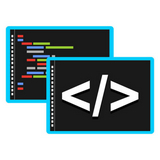C#中的反射是通过System.Reflection命名空间实现的运行时类型操作机制,允许动态获取类型信息、创建对象、调用方法和访问字段属性。利用Type类可查询类型元数据,Activator.CreateInstance能实例化对象,GetMethod、GetProperty等方法结合BindingFlags可访问公共或私有成员,Invoke用于执行方法。反射还支持加载外部程序集并查找实现特定接口的类型,常用于插件系统、ORM、序列化等场景。但因性能开销较大,建议缓存反射结果或使用Delegate.CreateDelegate生成委托以提升效率。

反射(Reflection)是C#中一种强大的机制,它允许程序在运行时动态获取类型信息、创建对象、调用方法、访问字段和属性。换句话说,通过反射,你可以在不知道具体类型的情况下操作类和对象,这为动态编程提供了极大的灵活性。
在编译时,我们通常知道要使用的类型、方法和属性。但在某些场景下,比如插件系统、序列化、ORM框架或依赖注入容器中,类型可能直到运行时才能确定。这时就需要使用反射。
反射的核心是System.Reflection命名空间,它提供了一系列类(如Type、MethodInfo、FieldInfo等),用于查询和操作程序集中的元数据。
常见用途包括:Type类是反射的入口点。你可以通过typeof()或对象的GetType()方法获取一个类型的Type实例。
// 获取类型信息 Type type = typeof(string); Console.WriteLine(type.Name); // 输出: String Console.WriteLine(type.Namespace); // 输出: System // 或从实例获取 var list = new List<int>(); Type listType = list.GetType(); Console.WriteLine(listType.FullName); // System.Collections.Generic.List`1[System.Int32]
通过Type可以获取构造函数、方法、属性、字段等成员信息。
反射允许你在运行时根据类型名创建实例,并调用其方法,即使这些类型在编码时未知。
// 假设有一个简单类
public class Calculator
{
public int Add(int a, int b) => a + b;
private string GetSecret() => "秘密信息";
}
// 使用反射创建实例并调用公共方法
Type calcType = typeof(Calculator);
object calc = Activator.CreateInstance(calcType);
MethodInfo addMethod = calcType.GetMethod("Add");
int result = (int)addMethod.Invoke(calc, new object[] { 5, 3 });
Console.WriteLine(result); // 输出: 8
如果你想调用私有方法,需要指定绑定标志:
MethodInfo secretMethod = calcType.GetMethod("GetSecret",
BindingFlags.NonPublic | BindingFlags.Instance);
string secret = (string)secretMethod.Invoke(calc, null);
Console.WriteLine(secret); // 输出: 秘密信息
除了方法,反射也能读写属性和字段,无论其访问级别。
public class Person
{
public string Name { get; set; }
private int age;
}
Person p = new Person();
Type personType = p.GetType();
// 设置公共属性
PropertyInfo nameProp = personType.GetProperty("Name");
nameProp.SetValue(p, "Alice");
// 访问私有字段
FieldInfo ageField = personType.GetField("age",
BindingFlags.NonPublic | BindingFlags.Instance);
ageField.SetValue(p, 25);
Console.WriteLine(nameProp.GetValue(p)); // Alice
Console.WriteLine(ageField.GetValue(p)); // 25
反射还能加载外部DLL文件,在运行时分析或执行其中的类型。
// 加载外部程序集(假设存在 MyPlugin.dll)
Assembly assembly = Assembly.LoadFrom("MyPlugin.dll");
// 获取所有类型
Type[] types = assembly.GetTypes();
foreach (Type t in types)
{
Console.WriteLine($"找到类型: {t.Name}");
// 查找实现了特定接口的类
if (typeof(IPlugin).IsAssignableFrom(t) && !t.IsInterface)
{
object plugin = Activator.CreateInstance(t);
MethodInfo execute = t.GetMethod("Execute");
execute.Invoke(plugin, null);
}
}
这种机制广泛应用于插件架构或模块化系统中。
虽然反射功能强大,但它的性能比直接调用要慢,因为涉及大量的运行时查找和安全检查。
优化建议:
// 使用委托提升性能示例
MethodInfo method = typeof(Calculator).GetMethod("Add");
var addDelegate = (Func<Calculator, int, int, int>)Delegate
.CreateDelegate(typeof(Func<Calculator, int, int, int>), null, method);
Calculator calc = new Calculator();
int result = addDelegate(calc, 10, 20); // 比Invoke快得多
以上就是C#中的反射(Reflection)是什么?动态编程与C#反射机制实战详解的详细内容,更多请关注php中文网其它相关文章!

编程怎么学习?编程怎么入门?编程在哪学?编程怎么学才快?不用担心,这里为大家提供了编程速学教程(入门课程),有需要的小伙伴保存下载就能学习啦!

Copyright 2014-2025 https://www.php.cn/ All Rights Reserved | php.cn | 湘ICP备2023035733号